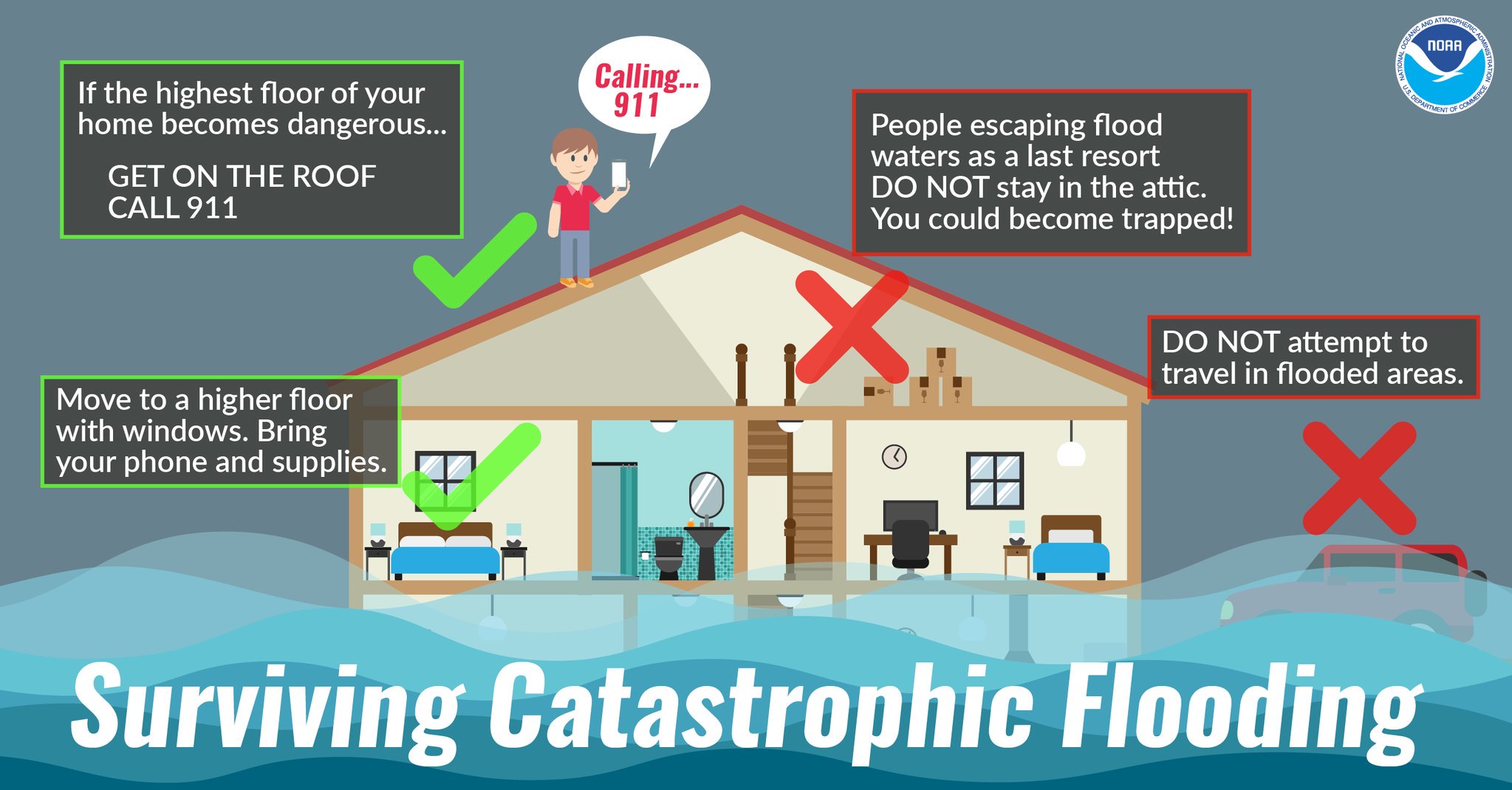Staying Safe During Flash Floods: A Comprehensive Guide To Flood Warnings

Table of Contents
Understanding Flash Flood Warnings
Flash flood warnings are time-sensitive alerts indicating imminent danger. Understanding the different types of warnings and where to find them is the first step in preparedness.
Types of Warnings
Different warning levels communicate varying degrees of risk:
- Flash Flood Watch: Conditions are favorable for flash flooding. Be prepared to take action if a warning is issued. Monitor weather reports closely.
- Flash Flood Warning: Flash flooding is occurring or is imminent. Immediate action is required. Evacuate if instructed. This is the most serious warning.
- Flash Flood Advisory: Flash flooding is possible. Be aware of the potential for flooding and take precautions.
Where to Find Warnings
Reliable sources for receiving timely flash flood warnings include:
- National Weather Service (NWS) website: weather.gov provides detailed forecasts and warnings specific to your location.
- NOAA Weather Radio: A dedicated weather radio provides continuous broadcasts, including emergency alerts, even during power outages.
- Weather Apps: Popular weather apps like AccuWeather, The Weather Channel, and WeatherBug send push notifications for severe weather alerts, including flash flood warnings.
- Local News: Television and radio stations provide up-to-date weather reports and emergency information.
- Emergency Alert System (EAS): This system delivers alerts through your mobile phone, TV, and radio.
Interpreting Warning Information
Pay close attention to the details within a flash flood warning:
- Affected Areas: Identify if your location is specifically mentioned.
- Rainfall Amounts: Understand the predicted rainfall intensity and duration. Higher amounts in a short time significantly increase flash flood risk.
- Timing: Note the expected start and end times of the flash flood event.
Preparing for Flash Floods
Preparation is key to mitigating the risks associated with flash floods. Having a plan and necessary supplies can save lives and reduce damage.
Creating a Family Emergency Plan
A comprehensive family emergency plan is essential:
- Establish evacuation routes: Identify multiple escape routes from your home and neighborhood.
- Designate a meeting point: Choose a safe location outside your home for your family to regroup after evacuation.
- Plan communication methods: Establish methods for contacting family members in case of separation, including designated phone numbers and meeting points.
- Prepare for pet evacuation: Have a plan to safely evacuate your pets.
Building an Emergency Kit
Your emergency kit should contain:
- Water (one gallon per person per day for at least three days)
- Non-perishable food (enough for three days)
- First-aid kit
- Medications
- Flashlights and extra batteries
- Radio (battery-powered or hand-crank)
- Copies of important documents
- Extra clothing and blankets
- Whistle
Home Flood Protection
Preventative measures can reduce the impact of flash flooding:
- Clean gutters and downspouts regularly to ensure proper water drainage.
- Install sump pumps to remove water from basements.
- Elevate electrical appliances and valuable items.
- Consider flood insurance.
Staying Safe During a Flash Flood
During a flash flood, your safety is paramount. Immediate action is critical to survival.
Evacuation Procedures
- Heed evacuation orders immediately.
- Move to higher ground.
- Take your emergency kit.
- Avoid driving through floodwaters – even a few inches of water can sweep your car away.
Seeking Shelter
If evacuation is impossible:
- Move to the upper floors of a sturdy building.
- Seek higher ground within your home.
- Avoid basements and lower levels.
Avoiding Dangerous Situations
Never attempt to:
- Drive or walk through floodwaters. The current is often stronger than it looks, and the water may be deeper or contain hidden debris.
- Touch downed power lines.
- Enter a building with damaged electrical systems.
After the Flash Flood
Post-flood, safety remains a concern.
Safety Precautions
- Be cautious of contaminated water – avoid contact.
- Beware of downed power lines.
- Inspect your home for structural damage before re-entering.
Reporting Damage
Report damages to:
- Your local authorities
- Your insurance company
Seeking Assistance
Contact these organizations for aid:
- American Red Cross
- Federal Emergency Management Agency (FEMA)
- Local charities and community organizations
Conclusion
Understanding and responding effectively to flash flood warnings is vital for safeguarding lives and property. By preparing a family emergency plan, assembling an emergency kit, and knowing how to react during and after a flash flood, you significantly improve your chances of surviving this dangerous natural event. Don't wait for a flash flood warning to catch you unprepared. Take action today to create a family emergency plan and learn how to best respond to flash flood warnings in your area. Your safety depends on it.

Featured Posts
-
 Actress Mia Farrow Sounds Alarm Is American Democracy On A 3 4 Month Timer
May 25, 2025
Actress Mia Farrow Sounds Alarm Is American Democracy On A 3 4 Month Timer
May 25, 2025 -
 Sean Penn Questions Dylan Farrows Account Of Woody Allen Abuse
May 25, 2025
Sean Penn Questions Dylan Farrows Account Of Woody Allen Abuse
May 25, 2025 -
 French Cac 40 Index Slight Weekly Dip Overall Stable
May 25, 2025
French Cac 40 Index Slight Weekly Dip Overall Stable
May 25, 2025 -
 At And T Raises Alarm Over Broadcoms Extreme V Mware Price Hike
May 25, 2025
At And T Raises Alarm Over Broadcoms Extreme V Mware Price Hike
May 25, 2025 -
 Annie Kilners Engagement Ring A Public Display After Walker Reunion
May 25, 2025
Annie Kilners Engagement Ring A Public Display After Walker Reunion
May 25, 2025
Latest Posts
-
 Maryland Mourns The Loss Of Legal Luminary George L Russell Jr
May 25, 2025
Maryland Mourns The Loss Of Legal Luminary George L Russell Jr
May 25, 2025 -
 Claire Williams And George Russell A Complex Relationship In Formula 1
May 25, 2025
Claire Williams And George Russell A Complex Relationship In Formula 1
May 25, 2025 -
 Did Claire Williams Wrong George Russell A Critical Examination
May 25, 2025
Did Claire Williams Wrong George Russell A Critical Examination
May 25, 2025 -
 George Russell Pays Off 1 5m Debt Signals Point To A New Mercedes Contract
May 25, 2025
George Russell Pays Off 1 5m Debt Signals Point To A New Mercedes Contract
May 25, 2025 -
 Analyzing The Impact Of Claire Williams Decisions On George Russells Career
May 25, 2025
Analyzing The Impact Of Claire Williams Decisions On George Russells Career
May 25, 2025
